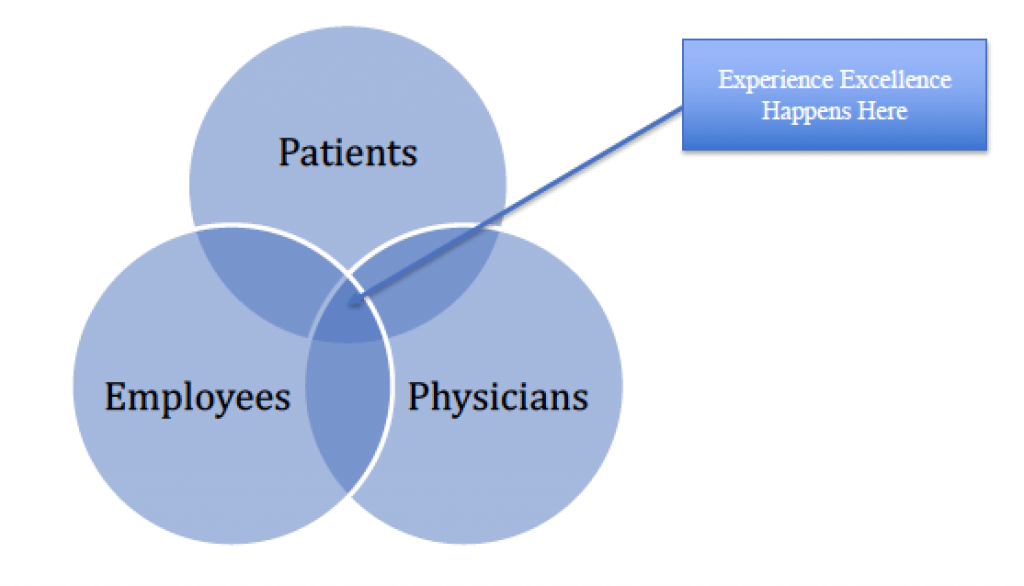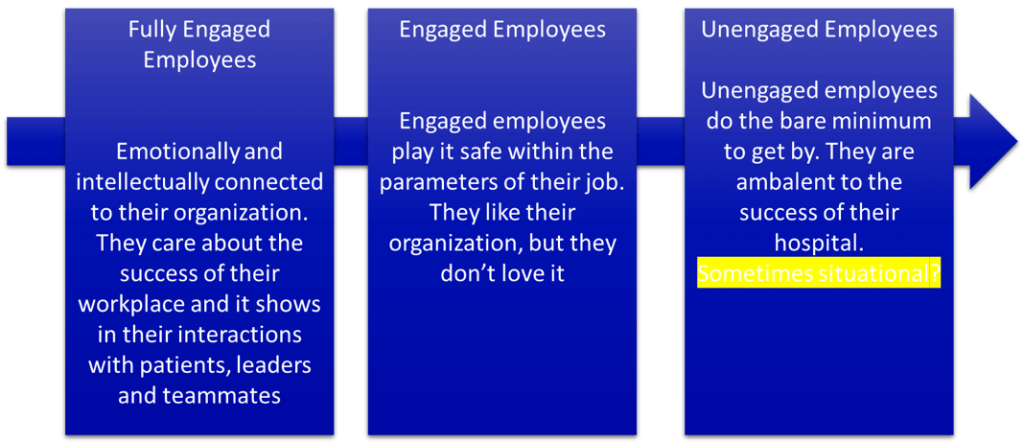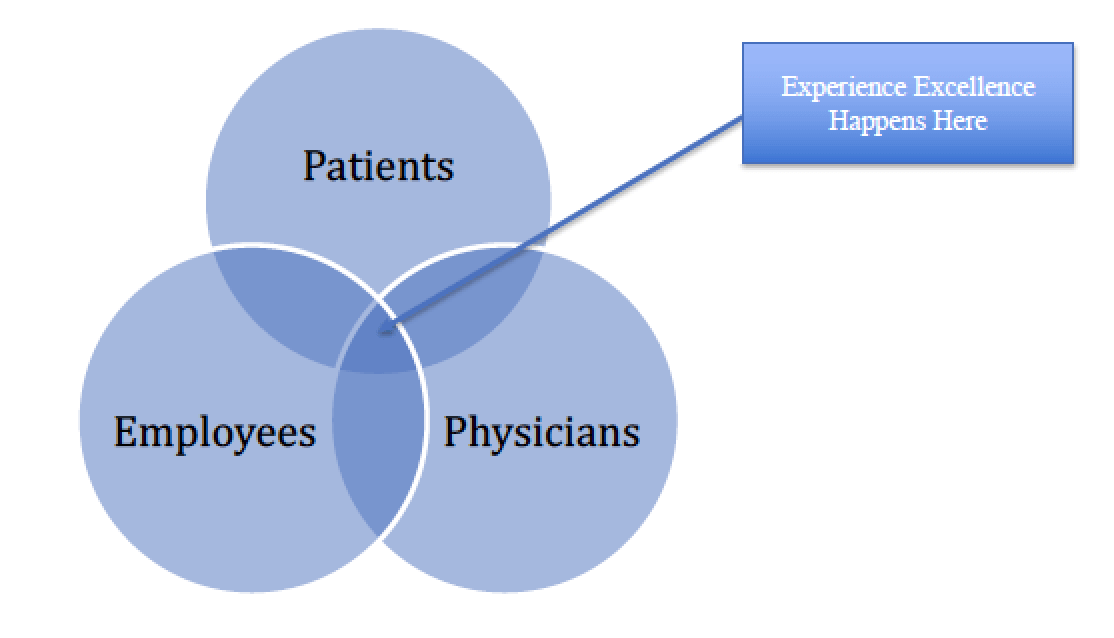The State of the Healthcare Experience
Does Excellence Really Matter in 2019?

Every physician, nurse, administrator, patient, and caregiver/loved one matter. We want to focus on an ambition of excellence. Inspiration to inspire new and better action. While there is daily greatness in healthcare, as an industry we have some real challenges. Every organization wants to improve, to do better, to achieve greater experiences. The struggle is with how to constantly working to raise the bar.
Employees
There is little debate that employees are the backbone of the healthcare industry across the entire continuum of care. Nothing is more critical to the success of an organization as the degree of engagement of their employees. Yet, among the more than 12 million healthcare workers, we are seeing record reports of burnout, high levels of turnover and growing disengagement. At PRC, our research demonstrates that most employees are either Fully Engaged, Engaged or Unengaged. Our goal to create workforce excellence is to expand our group of fully engaged employees and either move up or out Unengaged employees.
This matters, because if our workforce is not fully engaged… What are our patients and loved ones going to experience? Will we be able to achieve consistent high-quality care? Can we add distribution of scores?

Drivers of Workforce Engagement
In our analysis of our national database of healthcare organizations, the following key drivers emerged as most influential to achieve workforce engagement:
- The communication between departments
- Your level of trust in senior leadership
- The staffing in your department to handle the workload
- The level of training you have received in order to do your job effectively
These key drivers illuminate important themes of communication, teamwork, as well as interpersonal and tangible workplace support.
To get an engaged workforce, you must provide both interpersonal and workplace support. Autonomy, Interpersonal Relationships, and Leadership Access & Responsiveness were found to have the greatest impact on a nurses’ level of engagement.
Physicians
Workforce engagement refers to the extent of workforce commitment, both emotional and mental.
Driver of physician loyalty
Administration’s responsiveness to Physician concerns and complaints
Nursing Care and Treatment of Patients
Initiatives to improve patient care relative to
safety issues
Patient Experience
Healthcare experiences are never a single encounter, they are made up of millions of small encounters.
Inpatient
Overall Teamwork Between Doctors, Nurses, and Staff
Overall Level of Safety
Staff’s Courtesy and Friendliness
Cleanliness of the Hospital
Staff’s Management of Pain
Nurses’ Understanding and Caring
Emergency Department
Overall Teamwork Between Doctors, Nurses, and Staff
Overall Level of Safety
Discharge Instructions
Respect for Patient’s Privacy
Doctor’s Understanding and Caring
Total Time Spent
Parking Lot
For Patient Outcomes– Improve your patient experience by investing in your nurses
In previous research, PRC has found that nurse engagement and patient experience have a direct relationship that, when viewed collectively, can provide meaningful insight into the hospital patient areas and hospital system’s overall work environment. Out of the 37 hospital facilities that participated in the National Nursing Study, 26 hospital facilities had HCAHPS data collected during the time period that the registered nurses took the NQAI.
Comment
There were significant correlations between the majority of HCAHPS dimensions and facility level nurse engagement. Responsiveness to Patient Needs and Care Transitions have the highest correlations with Engagement. Nurses that are more fully engaged begin to exhibit behaviors that help them connect with their patients. They are more empathetic in their interactions with patients and their families. The are more present in the moment and therefore, timelier and more aware of their patients’ needs. Their patient care becomes true caring. They are able to anticipate patients’ needs by creating an intentional experience. They are able to do this because their hospital has put their needs first. They have the resources and support to stay mentally health. By being fully engaged in their practice, they then in turn have the personal resources to help those patients in need.
| HCAHPS Dimensions | Significant Correlations with Nurse Engagement |
| Care Transition | r = .427* |
| Discharge Instructions | r =.383* |
| Hospital Environment | r =.464* |
| Nurses Communication | r =.396* |
| Overall Hospital Rating | r =.392* |
| Quiet | r =.424* |
| Responsiveness to Patient Needs | r =.462* |
*Correlation is significant at the 0.05 level (2-tailed)
- Posted in:
- Culture



